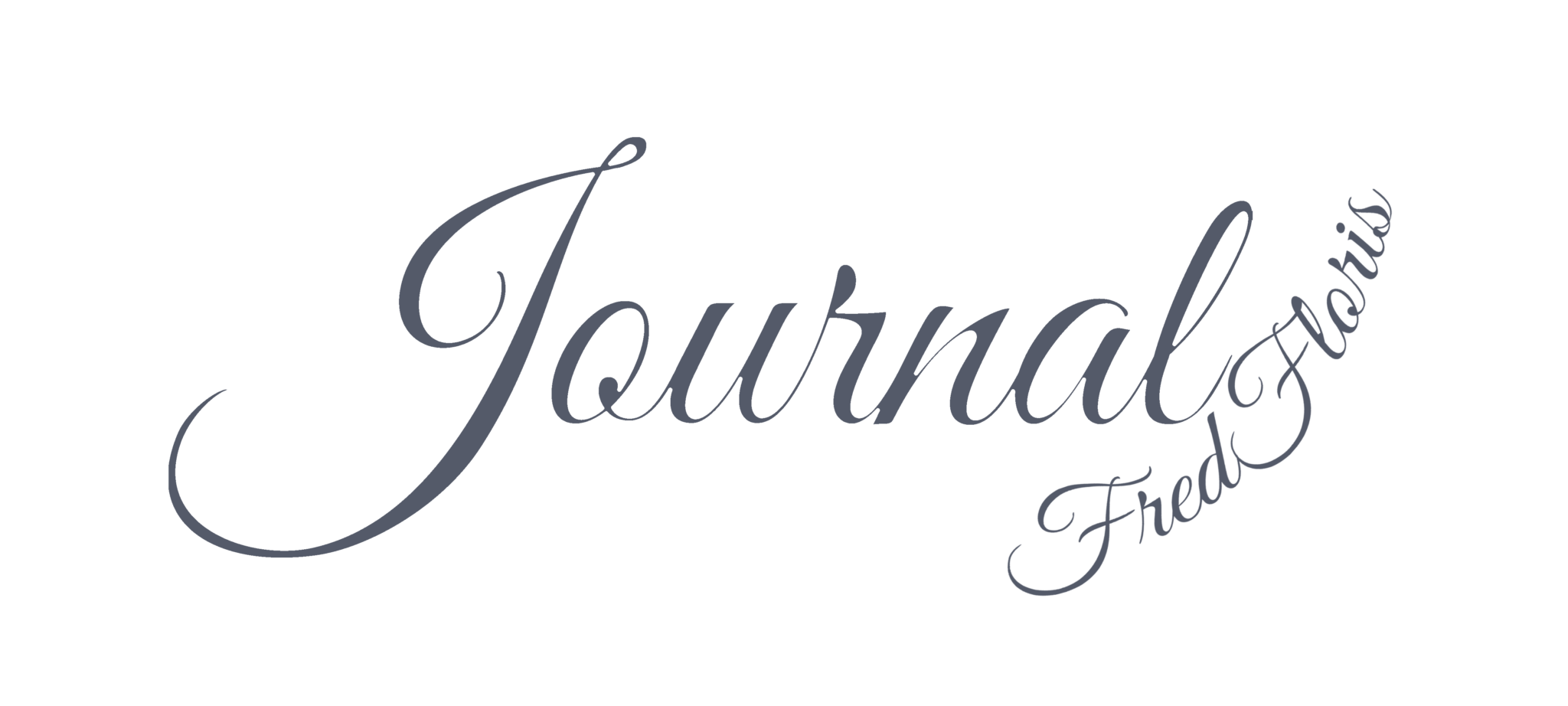By Kim Bui
Introduction
In the simplest sense, cufflinks are used to hold the cuffs of a shirt together. This is what they are intended for after all. However, among fashion enthusiasts, the details of an outfit, no matter how small, make a difference to an outfit, and cufflinks are no exception.
To us, cufflinks are more than just a functional item. They are the hallmark of sophistication because they could transform your most boring formal wear into a fashion masterpiece. The accessory adds a level of detail that suits and ties alone cannot provide. They are also perfect for revealing that winning personality of ours!
In this blog post, we will be introducing you to the world of cufflinks. By uncovering the history of cufflinks, our favourite types, and what to wear based on the event you are going to, this blog post will help you level up your style this year.

History
In the Beginning
If we look at the history of cufflinks, we will see that the invention and development correlate directly with the development of men’s shirts.
Men’s shirts used to be simple tunics that opened to the front with sleeves and a collar, but after the middle-ages, men began decorating the visible (neck, chest, and wrists) with frills, ruffs, and cufflinks. This change in fashion marked the end of functionality and the beginning of personal expression.
At first, the cuffs of a shirt were held together with ribbons and bows. But, over time men wanted a more elegant method of holding their cuffs together, and thus the cufflink was born.
The cufflink began picking up steam towards the end of the 19th century with the rise of the newly employed class of bourgeoises. The bourgeoises were the bridge between the opulent wealthy kings and the everyday man. To establish this new class of men, the bourgeoises displayed their status through their fashion which consisted of wearing a dark suit by day, a dinner jacket by night, and cufflinks to accentuate their outfits.
Modern Day
The popularity of cufflinks continued into the 1930s, 40’s, 50’s, and 60’s as men continued to wear dress shirts. Businessmen of varying classes began wearing cufflinks and stud sets for a more casual wear. This expanded the use beyond the traditional gala or evening events. Prices came down and cufflinks became more affordable to the average middle-class gentleman. A classic example of a cufflink from this era is our vintage Aspeland Watch Movement cufflink. The details are subtle, yet unique which allows men to show off their personalities without being too flashy.
However, in the 1960s during the Woodstock era, the industry saw a sharp decline in sales. This drop in sales correlated with the growing counterculture social movement that began to take shape.
Low sales continued into the 20th century when shirt manufacturers began producing dress shirts with buttons to fasten the cuffs. However, this didn’t leave the cufflinks extinct.
Today, those with the best fashion sense, including both men and women, adore cufflinks for their aesthetic sensibility. Modern women have begun incorporating cufflinks into their wardrobes blending both masculine and feminine energy into their outfits. The marrying functional and ornamental qualities make this accessory one of the most worthwhile fashion investments you’ll ever make!
Different Types of Cufflinks
Since the 1600s, men’s style has developed throughout the century producing different types of cufflinks. While we believe all cufflinks deserve special recognition, there are too many in the world, so we have chosen our top 5 favourites.

T-Bar Toggle
The T-bar toggle is a modern-day classic and the most common cufflink today due to its easy-to-make and easy-to-use feature. The cufflink is created with the foot and the shaft already attached together. This design makes it easy for manufacturers and retailers to attach the pair to any face creating a complete cufflink.
To use the toggle, flip the foot at a 90°angle to the shaft. Once the foot and the shaft are aligned, the cuffs are anchored together by sliding the cufflinks through the cuff holes. Created exclusively using a toggle backing are the ones we offer at FredFloris.
Chain Cufflinks
When it comes to chain cuffs, the concept is still the same except for one key differentiating marker. Instead of having a solid and sturdy shank in place, there is a chain that connects the foot of the cuff to the face. When worn, both the face and the foot are on display. The chain also allows for looser cuffs and a more relaxed look.
Snap Cufflinks
The snap cuff works exactly like a snap button, in which the face and foot of the cuff snap together without a shaft. These cuffs found popularity in the 20th century due to their ability to mix and match the front and the foot adding versatility to their cufflink collection.
Locking Cufflinks
Locking cufflinks are a contemporary style, and although they look intimidating to use, they are the most secure.
The closure on these is comparable to the closure on a metal watch. Once the shaft and foot are through the cuff holes, you fold them together and the cuff locks securely in place. While this cufflink also doesn’t have a long shaft in between the face and the foot like traditional cufflinks do, the locking cufflinks tend to have a larger face and foot allowing space for a larger picture.
Knotted Cufflink
Great for informal occasions, the silk knot cufflink provides a pop of color and ease of use. These silk-knotted cufflinks are made with an elastic core and a fabric cover. Although they are slightly less durable than their metal counterpart, knot cufflinks are the most affordable option out there.
What Cufflinks to Wear with Different Occasions
Cufflinks forever remain one of the classiest accessories for men. Once associated with the tuxedo ensemble and black-tie events, cufflinks have now become a sophisticated and understated way to spruce up any shirt and let your personality shine through. Therefore, which cufflink you wear or how you style it is ultimately up to you. But, if you’re looking for some basic ‘rule of thumb’ style tips, then we’ve got you covered.
White Tie Event
A white-tie event is the most formal event anyone can attend. It demands the utmost elegance. Individuals attending these events are of high social standing. Some examples are the President of the United States or the King of the United Kingdom.
At these events, you can expect to see women in floor-length gowns. Men must wear a matching black suit with coat-tails and a stiff white evening shirt underneath. Due to the level of formality at these events, cufflinks are mandatory and should be platinum gold, white gold, mother-of-pearl, or generally something light. This is not the time to show off your personality.
For those attending a white tie event, we recommend our Mother of Pearls cufflinks. Our cufflinks are made from organic gemstone wrapped in 24k gold-plated sterling silver. Due to the natural pearl material, the face of the cufflinks reflect an iridescent shimmer when it catches the light.
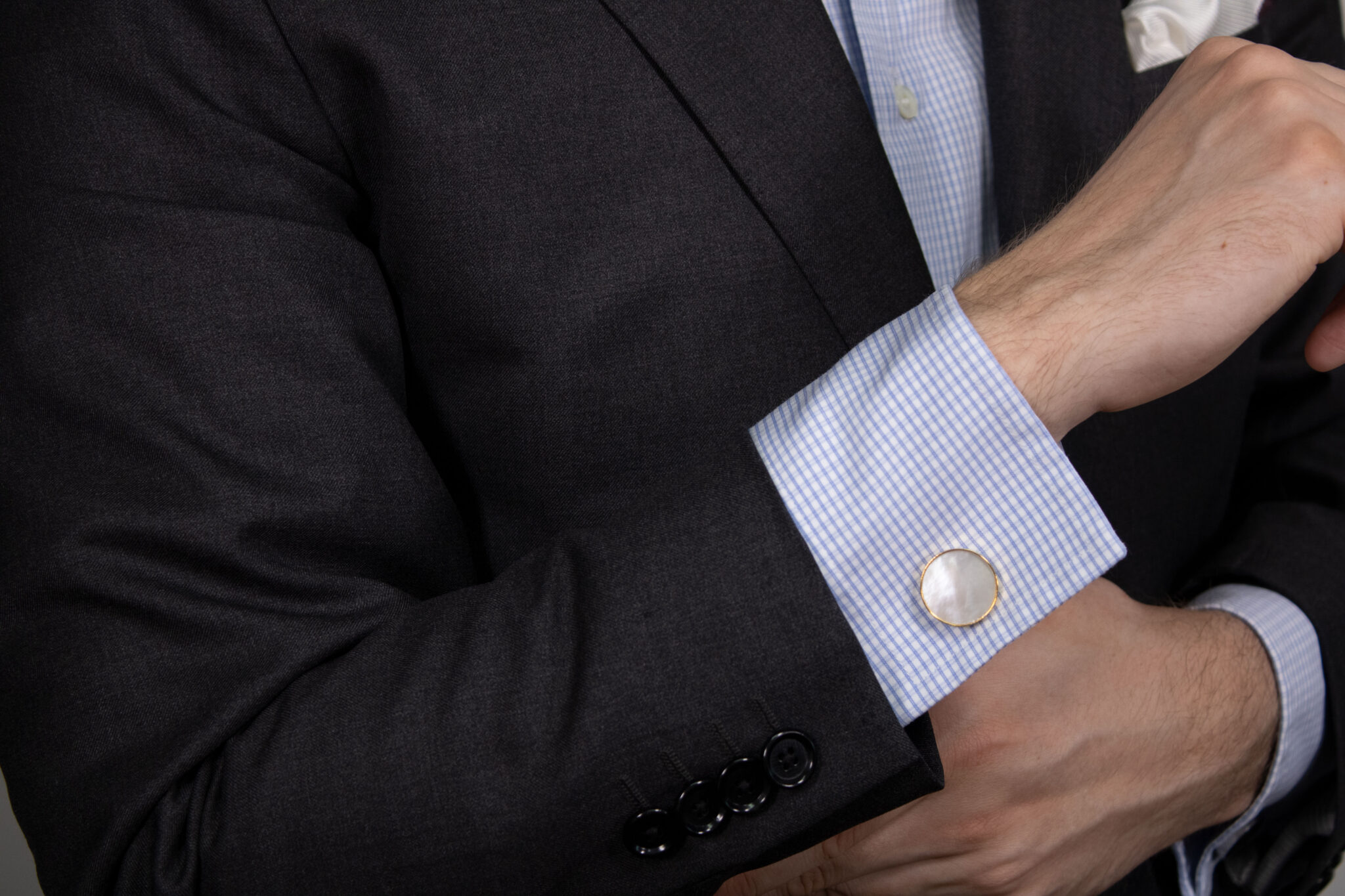
Black Tie Event
A black tie event, also known as an “evening dress” attire, is still highly formal. When you think of these events think of award ceremonies, prestigious galas, or milestone birthdays. However, the dress code is loosened just a bit.
Women still wear formal floor-length gowns but can get away with an elegant cocktail dress. As for men, you must wear a black suit, hence the name black tie event, but you are able to ditch the evening coat tail and stiff white pressed vests.
As for the cufflink, you can add our onyx or tigers eye cufflinks that are as equally bold and daring as they are simple.
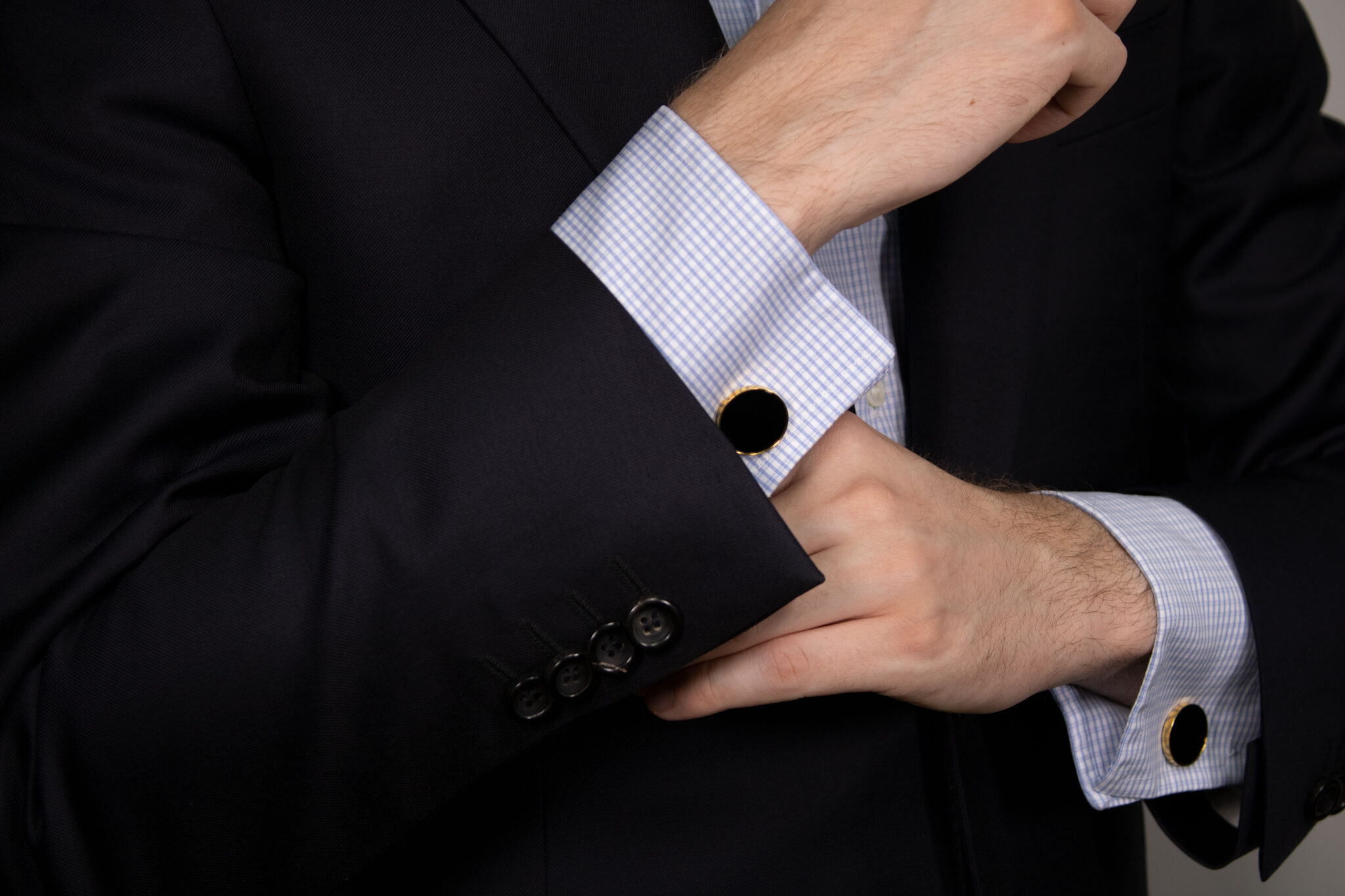
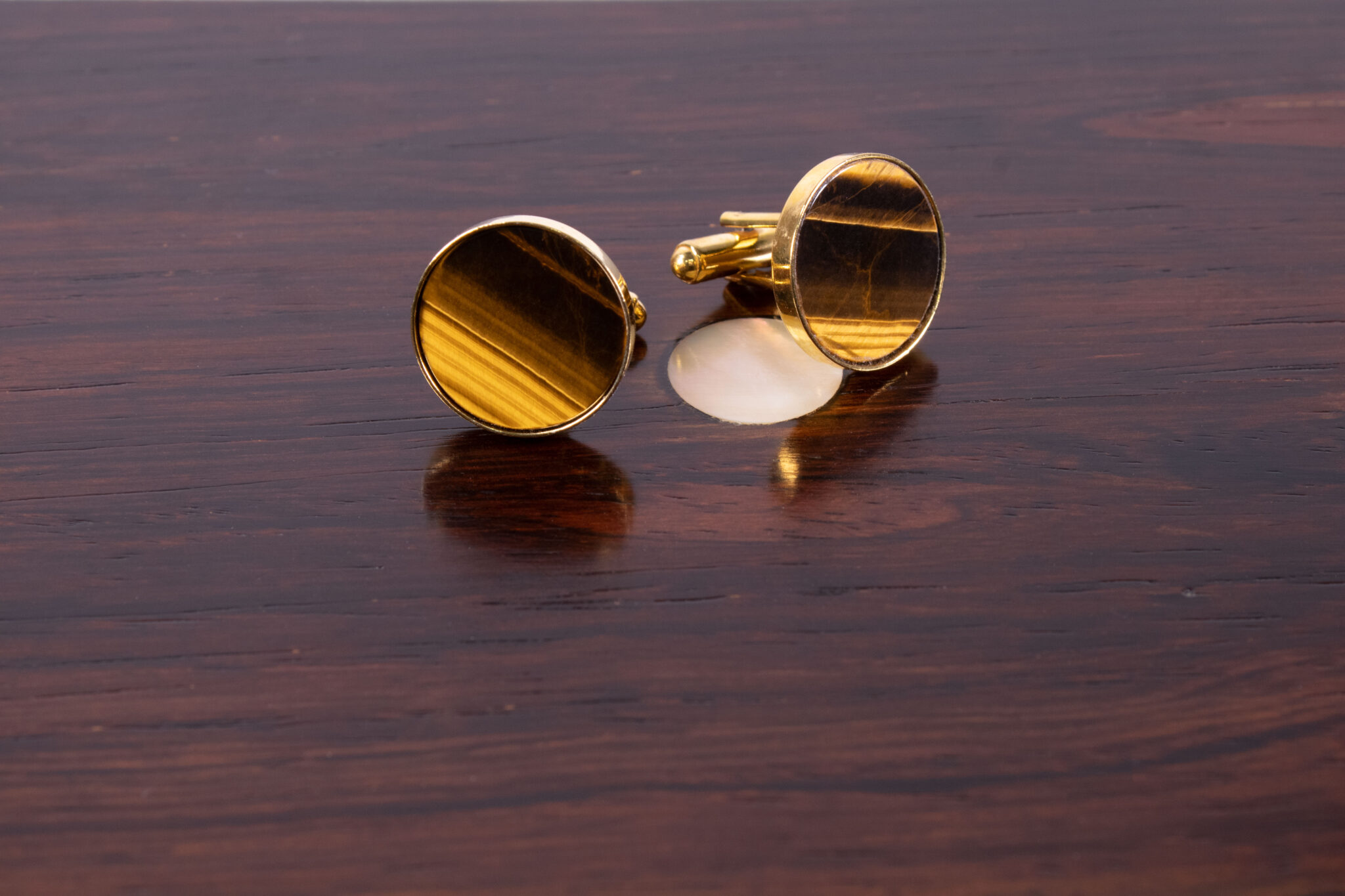
Wedding
For weddings, what you wear depends on what role you are playing in the wedding.
If you are the groom, wear whatever you want! It’s your party after all. However, nothing deserves to be commemorated more than your own wedding. Why not treasure this moment by engraving your initials, your partner’s initials, or your wedding date on leather cufflinks from FredFloris and sport them on your wedding day?
For wedding guests, the dress code is a little different as it depends on the dress code of the wedding. The most formal wedding you can attend is a black-tie event, then a formal, cocktail, semi-formal, and casual. As you move down the list, the formality of the dress code relaxes more and more along with the cufflink requirement.
For example, when attending a wedding with a black tie or formal dress code, these tend to be more traditional weddings so it is best to choose cufflinks that are elegant. You can add a little bit of personality into your cufflinks such as wearing colour, but nothing too vibrant or ones that attract attention.
With a cocktail or semi-formal weddings, they are still sleek and chic events, but if you wanted to show more of your personality and style, this is the time to do so! Everything from patterned and wooden cufflinks to chains and animal shaped is fair game. Just remember to keep it tasteful.
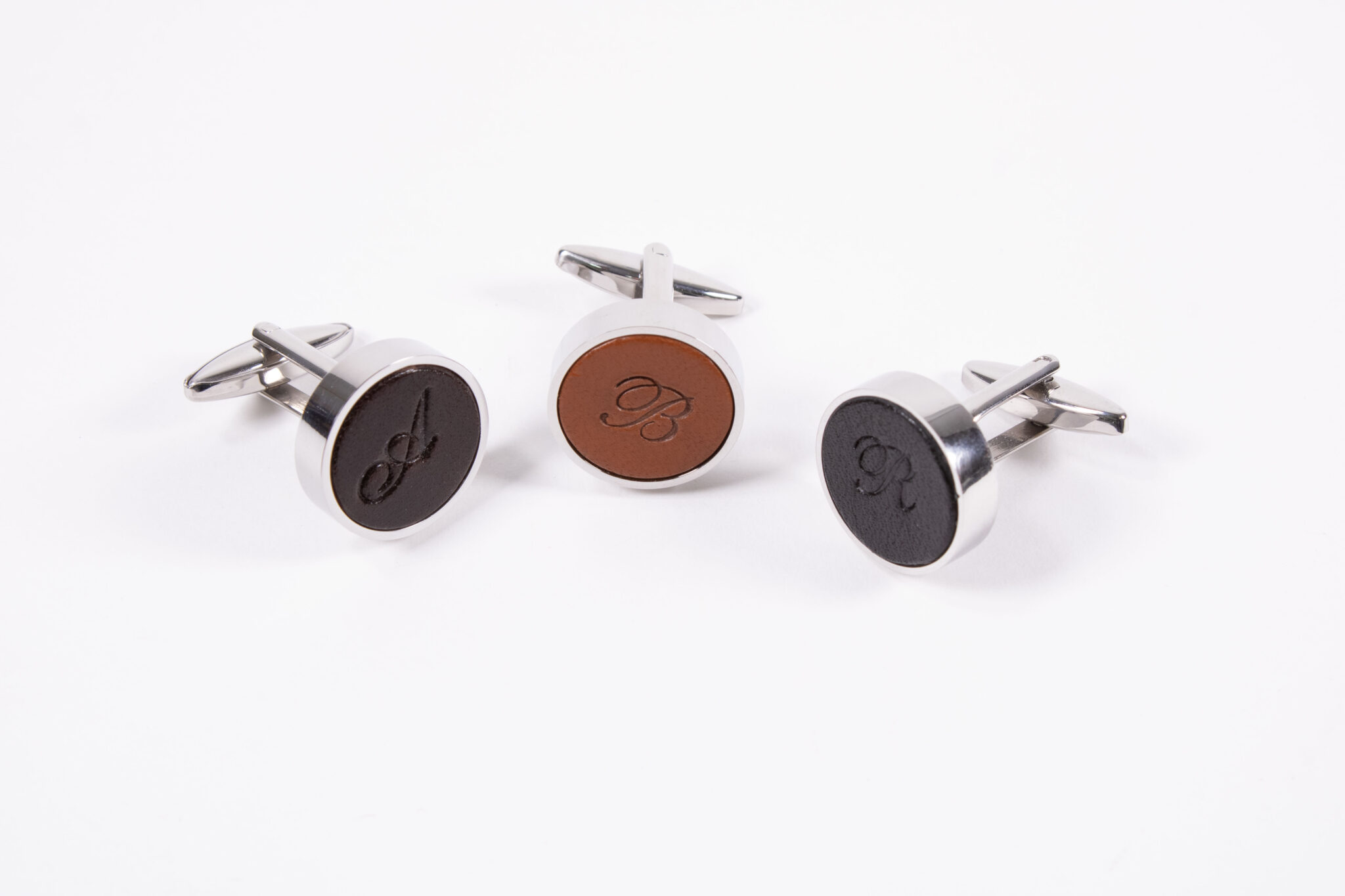
Final Thoughts
In the beginning, cufflinks were developed as a tool to hold the cuffs of a shirt together. But, as men’s fashion began developing based on the era, cufflinks became a more sophisticated part of a man’s wardrobe. Now, cufflinks are not exclusive to only men. They are inclusive to women as well, demonstrating that cufflinks are a gender-neutral accessory. With cufflinks, there are different ways to link your cuffs together, different types of cufflinks created for various events, and unique cufflinks to express all personalities out there.
We believe that so long as there are dress shirts with cuffs in this world, and individuals who aspire for a sophisticated style, cufflinks are here to stay.
